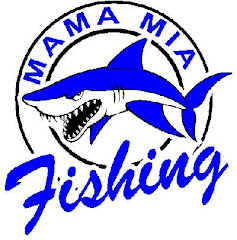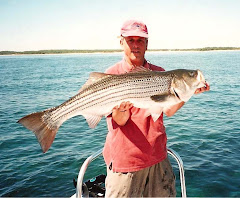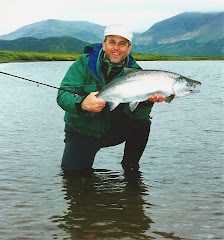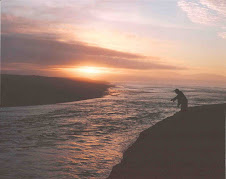Long before the fly rod entered my life and became a preferred tool, I was equally as hooked on light tackle angling. As a matter of fact, I still am. In great part, that predilection stems from my early freshwater fishing roots for largemouth and smallmouth bass. Back then I didn’t venture anywhere without several spinning and conventional casting outfits rigged with a range of lines from eight to twelve-pound test line. Over time, I added a bass-bugging fly rod to my arsenal, accumulating what I believed was a very well rounded array of tackle, capable of handling most any bass-fishing situation. And when I first dipped a toe in saltwater I did so with that same gear. I will admit, the feistier briny bass, and other salty inhabitants fully tested that tackle but in the end stripers, bluefish, weakfish, Atlantic bonito, fluke, Spanish mackerel and a host of other indigenous and migratory species succumbed to my light-line orientation. While today’s tackle is much more sophisticated than it was back when I started to fish, the common thread between then and now is that maintaining a broad-based approach to my fishing endeavors was and remains a key to consistency and success. Fly-fishing and light spinning or casting gear are very complementary tools of the trade and work well in tandem with one another, enhancing the overall fishing experience.
A New Paradigm
The sport fishing industry is witnessing a rather interesting phenomenon. We seem to be in the midst of a light tackle renaissance. Back about two decades ago, and paralleling the striped bass revival, sport fishing saw an explosion of interest in saltwater fly-fishing. More than ever before literal throngs of anglers took up the long rod. Many were freshwater trout converts motivated by the opportunity to hook larger and stronger fish than they were used catching. Others were seasoned surf and boat salts looking for a new way to entice fish to strike. And then there were the completely new entrants into the arena, beginning their fly-fishing journey in saltwater. For nearly twenty years that community of anglers grew to a point where it spawned a dynamic and full-service industry centered about fly-fishing. We now have more fly anglers among our ranks than ever before in the history of the sport, fueling guiding businesses, charter captains, equipment and clothing manufacturers, lodges, exotic destinations and much more. And this is all for good reason – fly-fishing is a very effective way to fish. At times, fly-fishing techniques will out perform other forms of angling. But several years ago something interesting began to happen. Fishing tackle retailers saw a spike in the number of light tackle outfits they were selling and a little research revealed that many of those of those buying spinning and conventional outfits were fly fisherman. Heresy you might say. Not I. Just the application of some common sense. There simply are times when one needs to be flexible in the approach to fishing if you want to maximize the opportunities. Admittedly, there are those die-hard anglers and guides among us who remain pure to the use of the fly. But the growing trend is to move more toward the middle and fish both fly and light tackle as conditions warrant. One very famous TV fishing personality is prone to say of his personal fishing, “Take what God gives you.” Simply put, give the fish what they want and how they want it.
Optimizing Opportunities
There are many examples of optimizing fly and light tackle gear but a couple of situations best illustrate my personal experiences. Much of my fishing takes place along the beaches of the north shore. In the spring when the sand launce swarm there is nothing I would rather have in my casting hand than a long rod rigged with my favorite sand eel pattern. This is truly a time of year when flies can out fish just about any other form of artificial lure and astonishingly, even bait. If all goes well I can get a solid month and a half of this sort of fishing with bass very close in range to the fly rod. A similar scenario plays out in the fall as well with migrating fish within east reach of the fly rod. But mid-summer can present some surf fly-fishing challenges unless a retreat is made to the cover of darkness. This is a time where and when light tackle comes to the rescue. Within the areas I fish bass and large bluefish set up along summer cruising and feeding lanes that are often more than two or three solid fly rod casts off the beach. Hard as I might try and regardless how efficient my casts are, my longest fly line is only 125 feet in length. That limits casting and catching potential. Fish do come in close but not with the frequency they remain out of fly rod range. A friend of mine often shares this stretch of beach with me, usually armed with a spinning outfit. He will most often put up better numbers on the scoreboard and will also usually have a better quality catch. I can still manage fish on the long wand but his ability to reach the outer edges of where the fish congregate and feed insures much better results. I too have now come to fish this location at this particular point in the season with light surf tackle. It is just a much more dependable way to fish.
Playing Both Ways
But there is a flip side to this story as well. As the summer progresses and small rain bait - like bay anchovies - make an appearance, the probability of encountering Atlantic bonito or false albacore along the beaches increases. While pelagic species can certainly be caught consistently from boat or beach with conventional plugs or lures, flies are the best way to imitate the micro baits that bones or albies are often keyed in on. Some days flies will totally out fish any other method. And the satisfaction of taking fish this way is tough to surpass. But here is where the plot thickens further. There are also times when game fish are so keyed in on such masses of diminutive bait that even the most anatomically correct fly goes unnoticed from among the real deal. Ay fly rodder who has spent time pursuing pelagics will attest to this very frustrating situation. The challenge here is to catch the attention of fish and cause them to react to an artificial bait. Many fly anglers will resort to larger or flashier flies when this selectivity occurs but I have found very light spinning gear gets the job done much more effectively. The reason: you can get a flashy plug or lure in front of the fish quicker and move it away faster than you can with a fly retrieve. That accelerated “fleeing” motion is more apt to trigger a reaction strike. It is for that reason that during the bonito and albies seasons the rod holders on one side of my boat contain fly rods, while the other side holds spinning gear. That way I am ready for the fish’s preference, not just mine.
While there is a place in sport fishing for tackle purists those of us who adapt our methods to the circumstances will fare far better in the long run. Until next time, start thinking light.
Sunday, January 25, 2009
Subscribe to:
Posts (Atom)










